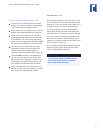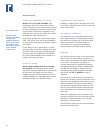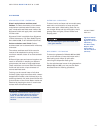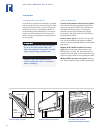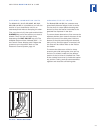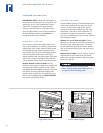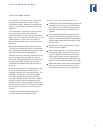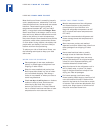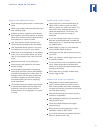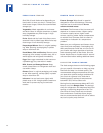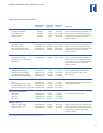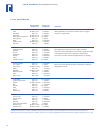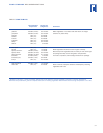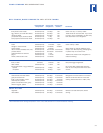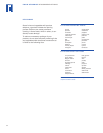
27
WHEN YOU PREPARE FOOD
C
lean everything that comes in contact with
food.
Wash your hands for 20 seconds before and
after handling food.
S
anitize counters, equipment and utensils
after handling raw meat, seafood or poultry.
Rinse with a dilute chlorine bleach solution,
one teaspoon to a quart of water.
Use clean kitchen towels, sponges and
cloths. Replace sponges every few weeks.
Use disposable plastic gloves if you have
an infected cut or burn on your hands.
Thaw food in the refrigerator or microwave
oven, not on the counter. When you thaw
food in a microwave oven, cook it immedi-
ately.
Marinate food only in the refrigerator.
Rinse poultry and seafood in cold water
before cooking.
Avoid cross-contamination in preparing
food. Keep raw meat, poultry and seafood
and their juices away from other food. For
example, don’t use the same surface and
utensils for preparing raw meat, poultry
and seafood that you use for preparing
salad ingredients.
Thor
oughly clean your plastic and wooden
cutting boards. Wash with hot water and
soap and rinse with a diluted chlorine
bleach solution of one teaspoon to a quart
of water.
WHEN YOU COOK FOOD
C
ook meat to an internal temperature of
165˚F (74˚C) or above, poultry to 180˚F
(82˚C) or above. For cuts more than 2" (51
m
m) thick, use a meat thermometer to
check the temperature. For thinner cuts,
clear juices (not pink) are a sign of
doneness.
If you are cooking frozen meat or poultry
that has not been defrosted, increase the
cooking time to 1
1
/2 times the time required
for thawed items.
Roast meats or poultry in oven tempera-
tures of 325˚F (163˚C) or above.
Cook eggs until the yolk and white are firm,
not runny.
Don’t use recipes in which eggs remain raw
or partially cooked.
If your microwave has a temperature probe,
use it. Check temperatures of meat and
poultry in at least three spots. Rotate foods
during microwaving.
Don’t taste raw or partially cooked meat,
poultry, eggs or fish.
WHEN YOU HAVE LEFTOVERS
Refrigerate or freeze cooked leftovers in
small, covered containers within 2 hours
after cooking. Make sure there is adequate
air space around the containers so that food
can cool down quickly.
Remove the stuffing from meat or poultry
and store it separately.
Date packages of leftovers and use within a
safe period of time.
Cover and reheat leftovers thoroughly
before serving.
Bring sauces, soups and gravy to a boil.
Heat other foods to 165˚F (74˚C).
If you think food may be spoiled, discar
d it.
When in doubt, throw it out.
KEEPING FOOD AT ITS BEST



